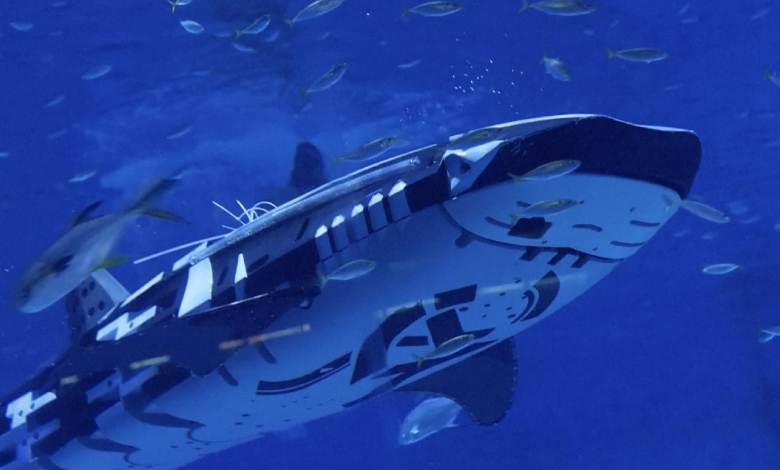Meet the world's first intelligent robotic whale shark


A Shenyang-based company is at the forefront of merging space technology with the marine industry, having successfully created the world’s first intelligent robotic whale shark. Developed by Shenyang Aerospace Xinguang Group under the Third Academy of China Aerospace Science and Industry Corporation Limited, this groundbreaking achievement marks a significant step forward in modern marine technology.
The nearly five-meter-long, 350-kilogram bionic marvel is capable of replicating the movements of a real whale shark with remarkable precision, including swimming, turning, floating, diving, and even movements of its mouth.
“This is the largest bionic fish we have studied so far. The whale shark has seven actuated joints, and each joint requires computing, communication, and sensing, which is also our key technology,” said Gao Chao, designer of Shenyang Aerospace Xinguang Group’s Underwater Propulsion Technology Research Office.
The robotic whale shark boasts impressive functionalities, such as a wireless remote control, programmed swimming, and multi-joint bionic propulsion, allowing it to reach speeds of up to 0.7 meters per second and dive to depths of 20 meters. Equipped with optical cameras, various sensors, sonar, and BeiDou positioning systems, this aquatic marvel can be deployed for multiple tasks, including water quality monitoring, underwater terrain mapping, and specialized missions.
“For example, when this robot performs underwater or carries out a task, it will inevitably encounter various obstacles on its route. How to fuse information obtained by multiple sensors is actually a technical difficulty. It can be understood that the brain of a whale shark is a computer. A mass of data must be screened and extracted synchronously, and then mutually corrected and verified before the truly effective data can be quickly extracted for our bionic whale shark to identify the surrounding environment,” said Fang Xuelin, assistant director of the Underwater Propulsion Technology Research Office.
Compared to traditional propeller-driven underwater robots, the bionic whale shark offers distinct advantages. Its enclosed design prevents water pollution, while its streamlined body minimizes entanglement with aquatic obstacles and reduces harm to marine life.
Building on this success, the company has expanded its bionic product line to include the Yangtze finless porpoises, killer whales, and dolphins. By seamlessly integrating marine bionic technology with intelligent systems, it is driving innovation in the underwater robotics sector.
As humanity delves deeper into the oceans, underwater robots emerge as indispensable tools for exploration and development. With advancements in materials science, control systems, and artificial intelligence, bionic robots like the whale shark are poised to revolutionize marine operations and scientific research.





